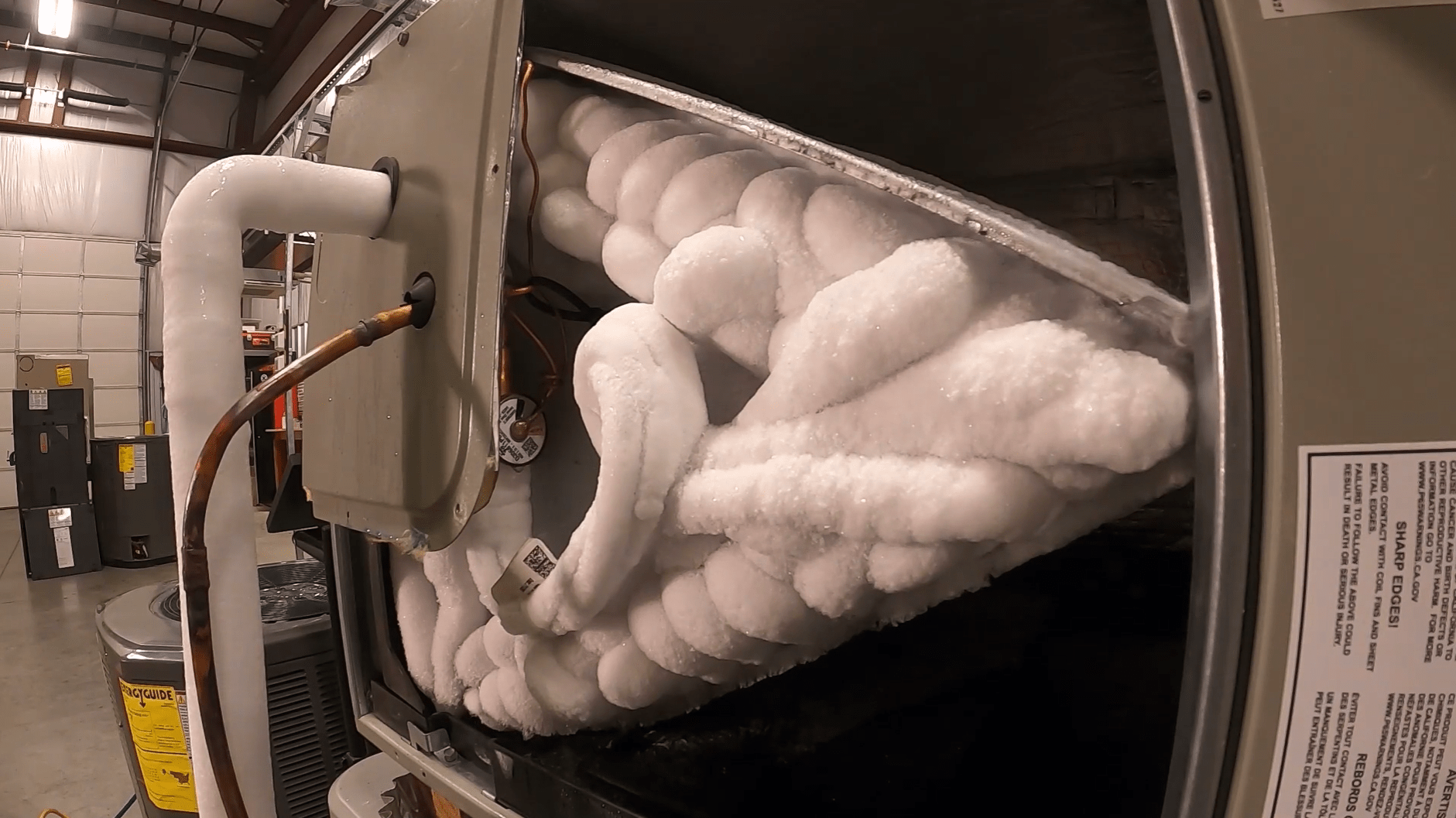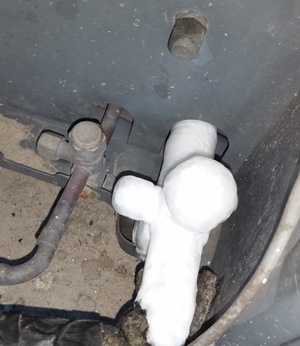Steps to Take When Your AC Pipe Freezes: Essential Guidance
Steps to Take When Your AC Pipe Freezes: Essential Guidance
Blog Article
Just how do you really feel when it comes to What Do I Do If My AC Pipe Is Frozen?

Intro
Uncovering that your air conditioner pipeline is frozen can be worrying, especially during hot summer months when you rely on your ac system one of the most. Recognizing what to do in such a circumstance is vital to prevent additional damages to your air conditioning system and ensure your comfort indoors.
Understanding the Causes
Numerous elements can add to the cold of an AC pipe. Understanding these causes can help you deal with the problem successfully.
Absence of Airflow
One typical reason for a frozen air conditioning pipe is inadequate airflow. When the air movement over the evaporator coil is limited, it can trigger the coil to drop below freezing temperature, bring about ice development on the pipe.
Reduced Refrigerant Levels
Inadequate refrigerant degrees in your a/c system can likewise cause an icy pipe. Reduced refrigerant degrees can cause the stress in the system to drop, bring about the freezing of moisture on the evaporator coil.
Cold Weather Conditions
In cooler environments, freezing temperature levels outside can contribute to the freezing of air conditioner pipelines. If your air conditioning unit is not effectively shielded or if there are leaks in the ductwork, chilly air can infiltrate the system, triggering the pipe to ice up.
Dirty Air Filters
Dirty or stopped up air filters can restrict air movement in your air conditioner system, bring about different concerns, including a frozen pipeline. It's vital to replace or cleanse your air filters on a regular basis to ensure correct air flow and prevent ice accumulation.
Indicators of a Frozen Air Conditioning Pipe
Acknowledging the indicators of an icy air conditioning pipe is critical for punctual action.
Reduced Airflow
If you see a substantial reduction in air movement from your vents, it might indicate an icy pipe.
Ice Buildup on the Pipe
Noticeable ice buildup on the cooling agent line or the evaporator coil is a clear indicator of an icy air conditioning pipeline.
Strange Sounds from the Unit
Uncommon sounds, such as hissing or bubbling, originating from your AC system can signify that there's ice present on the pipe.
Immediate Actions to Take
When confronted with an icy air conditioning pipe, it's vital to act quickly to avoid more damages to your cooling system.
Turning off the air conditioning
The primary step is to switch off your ac system to avoid the system from running and intensifying the problem.
Checking for Blockages
Examine the area around the interior unit for any kind of obstructions that might be obstructing airflow, such as furnishings or drapes.
Defrosting the Pipe
You can utilize mild approaches like placing towels soaked in cozy water around the icy pipeline to assist thaw it slowly.
Preventive Measures
Taking preventive measures can help avoid future events of an icy AC pipe.
When DIY Methods Fail
If your efforts to thaw the pipeline or address other issues are unsuccessful, it's time to contact a specialist.
Value of Hiring a Professional HVAC Technician
A certified HVAC service technician has the competence and devices required to identify and fix issues with your a/c system securely and effectively.
Regular Maintenance Checks
Arrange routine upkeep checks with a professional HVAC specialist to make sure that your a/c system is running effectively.
Altering Air Filters
On a regular basis change or cleanse your air filters to avoid airflow restrictions and keep optimum efficiency.
Protecting Exposed Pipes
If your AC pipelines are revealed to chilly temperatures, take into consideration protecting them to prevent cold throughout winter months.
Looking For Professional Help
If DIY techniques fall short to solve the issue or if you're not sure regarding how to proceed, it's ideal to seek support from a certified HVAC technician.
Verdict
Managing an icy air conditioning pipeline can be an aggravating experience, but understanding just how to react can aid reduce damage and restore convenience to your home. By understanding the causes, acknowledging the indications, and taking punctual activity, you can successfully deal with the issue and protect against future incidents.
Why is My AC Freezing? How to Fix an Icy Air Conditioner
As your air conditioner pumps out cool air to keep you and your family comfortable during the hot Kansas and Missouri summers, you need to feel sure that it will continue to work without fail. Sometimes, air conditioners freeze or become covered in ice. Cates Heating and Cooling wants you to understand why your air conditioner may be freezing up and how you can fix it.
What is Causing Your AC to Freeze?
It can be hard to pinpoint just what is causing an air conditioning unit to freeze, but the only way you can properly fix the problem is to determine the source. Two of the main reasons that air conditioners ice-up are:
Clogged air filters
Clogged air filters restrict the flow of air over the evaporator coils. Restricted airflow can cause the evaporator coil to drop below freezing and accumulate ice due to the humidity in the surrounding air.
Insufficient refrigerant
Low levels of refrigerant can be caused by a leak in the system or from improper installation when first charged. When the refrigerant drops too low, the temperature of the AC’s evaporator coil will drop too low and cause freezing and ice accumulation.
How to Fix a Frozen AC
The first thing you should do when you notice that your AC is frozen is turn the system off. Then, check the air filter to see if debris is clogging up the filter and preventing air from passing through. If your filter is dirty, change it out for a clean one and allow your unit time to defrost. You’ll want to make sure there is no ice on the outdoor unit, main pipe of the indoor unit, or the area around the main pipe. Once completely thawed, turn the system back and make the sure the problem doesn’t reappear.
Regular air conditioner maintenance may help you catch any damage to your air conditioning unit more quickly. These maintenance checks can locate leaks in your system or clogged air filters before they cause a problem for your unit and, in turn, your home.
If your air conditioning unit still isn’t cooling properly, the airflow isn’t improved, or you see ice reappearing on the unit. Call Cates Heating and Cooling right away. Our technicians are available for emergencies 24/7 for situations just like this one, so you don’t have to suffer in the summer heat for long. Since continued ice build-up can cause permanent damage to your air conditioning unit, don’t wait to get a local air conditioning repair service out to look at the unit.
What NOT to Do When Your AC is Freezing
Don’t continue to run the system. You will eventually damage the compressor and burn up the motor if airflow is restricted. If the damage to the parts becomes severe, you may need to replace the entire system. Don’t try to replace the refrigerant yourself without having the system leaks sealed. This won’t fix your problems, and it can result in depletion and re-icing in a short amount of time. Don’t try to remove the ice off of your unit. Instead of helping, you could cause damage to the equipment, which will result in expensive repairs. Instead, turn the unit off and allow it to thaw completely. https://catesheatingandcooling.com/blog/why-ac-freezing-how-fix-icy-air-conditioner/

Hopefully you liked our topic on Air Conditioner Frozen? How To Fix your Frozen AC Line. Thanks a ton for taking time to read through our blog. Appreciated our content? Please share it. Help another person find it. I take joy in reading our article about Have a Frozen AC Line? Here’s How to Fix It.
Call Today Report this page